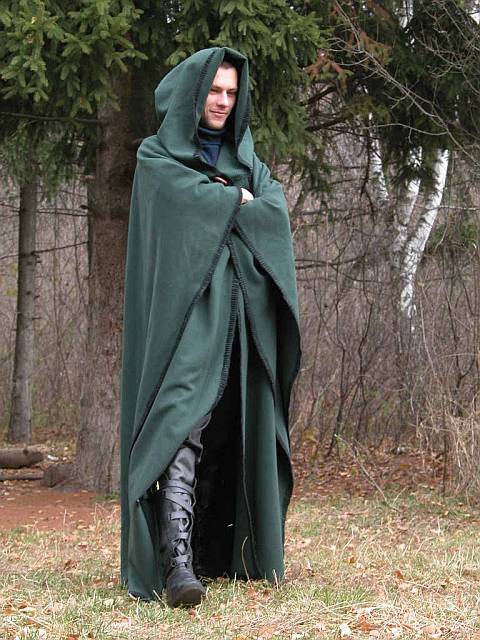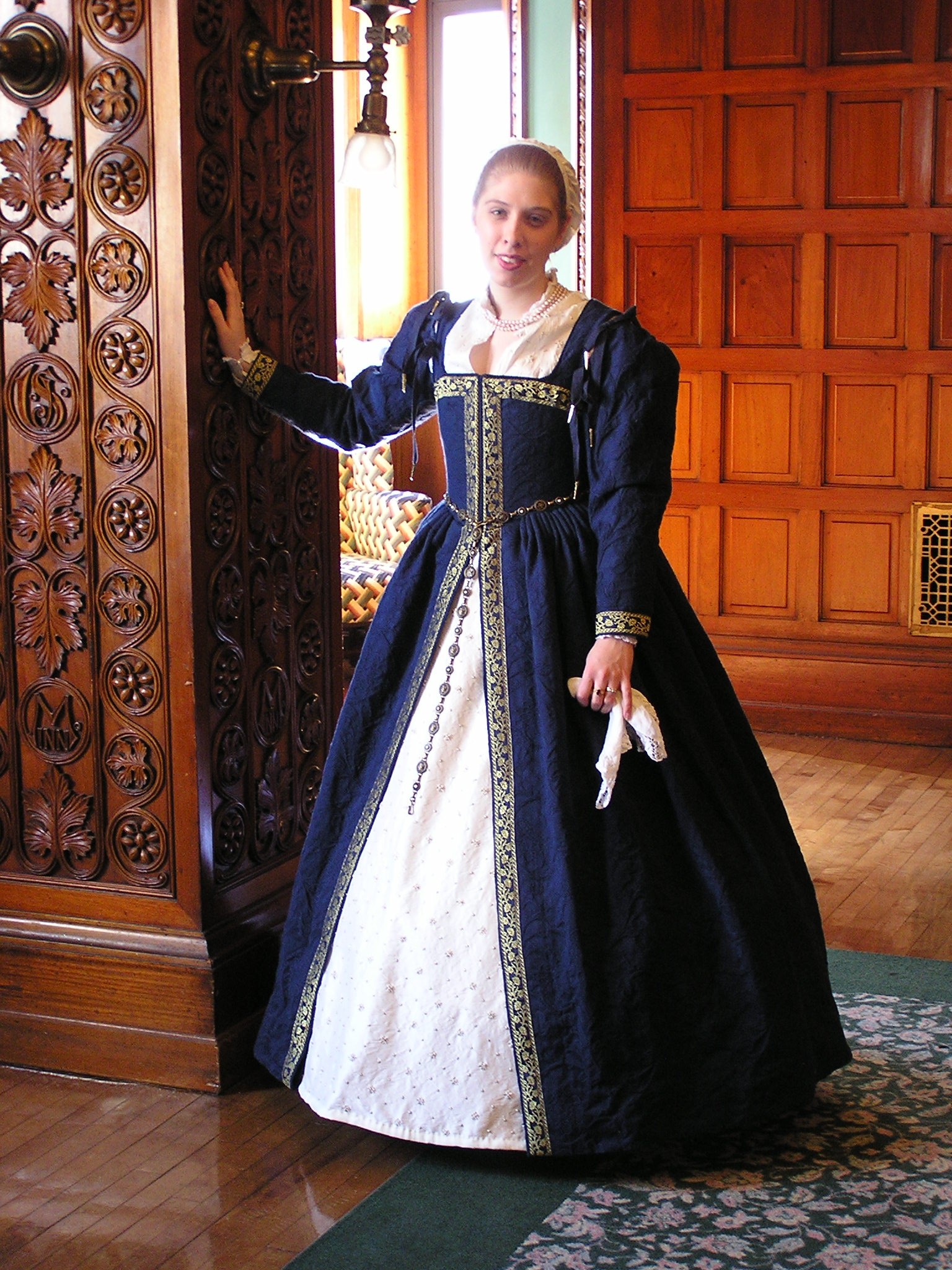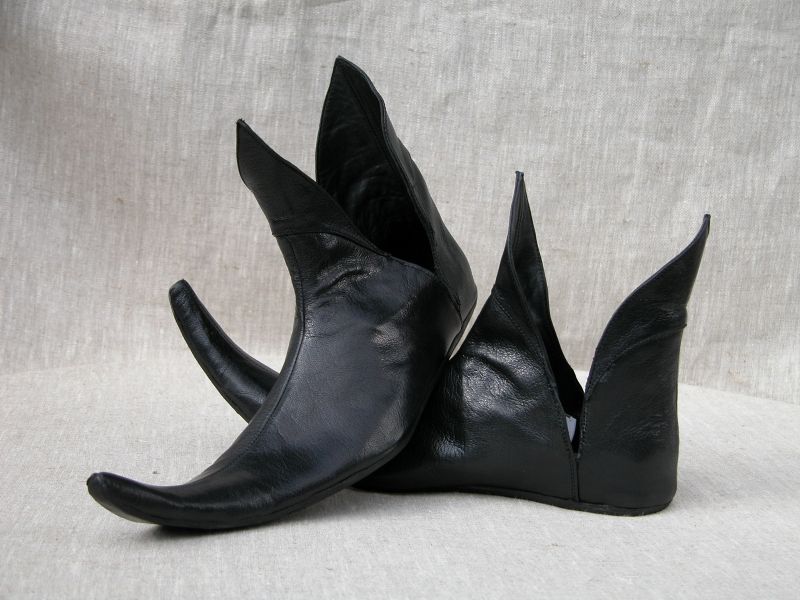Category:Garb
N. Garb is the costume that players wear.
In Amtgard

Paraphrased From the Amtgard Beginner's Guide by Dame Gwynne:
There are probably aspects of Amtgard more important than garb but it has to figure near the top of the list. Would Amtgard be as much fun without garb? Picture a feast without garb! Why is garb so satisfying? Why is any Amtgard function enhanced by garb? I think one of the biggest reasons is the difficulty in expressing, via what you wear, your true personality/persona in the mundane world.
Three basic patterns will serve to produce a basic garb wardrobe. We are of course referring to (1) T-tunic, (2) Basic pants, and (3) Basic skirt. With modification of material and length the three basics can be expanded into a closet full of garb and take you from feast to fray in comfort and style.
The most (MOST!!) important thing to keep in mind when considering the start of your engarbment is fit. Take your time- measure everything- twice! Create your three patterns to fit you exactly and then never worry about the fit again. Suitable material is anything that fits the following requirements:

FIGHTING GARB: Preferably a material that looks natural. Go for cotton/poly blends, linen/poly blends, wool or wool blends. The rougher the treatment the garb is liable to receive the heavier/sturdier the material should be. For pants use the twills, gaberdines, denims or the heavier wool blends. Use unbleached/bleached muslin for agood, cheap choice for shirts. Lighter weight twills, etc. are fine for tunics.
DRESS GARB: Anything goes. Just keep in mind that the more plush and/or delicate the material the more difficult upkeep is.
Basic Starter Wardrobe
FEMALE:
- Medium weight cotton skirt in dark gray.
- T-tunic, long sleeved in off white.
- T-tunic, wider gathered sleeve in a dark burgundy.
- Light weight skirt in dark burgundy.
- T-tunic made to floor length in a very fine cotton, light gray for feasts, etc.
- T-tunic, short sleeved in dark gray.
MALE:
- Heavy to medium weight twill pants in dark brown.
- T-tunic, short sleeved in tan.
- T-tunic, long narrow sleeve in blue.
- Medium weight pants in blue for dress events (feasts, etc.).
- T-tunic, long, wide, gathered sleeve in off white muslin or cotton.
- An over-tunic, sleeveless or a very short, capped sleeve to wear over the muslin shirt and the blue shirt.

Accessories
Shoes- Where on Earth do you get them?
- Shop a lot in “cheap” areas. Some of those strange little shops will occasionally have the perfect soft boot or funky, totally medieval sandal you have been lusting for.
- Keep an eye on the large department stores at the various malls. I have found several pair of good garb boots at department stores- on sale yet!
- Major Renaissance events often have merchants selling garb shoes.
- Amtgard Garber’s Guild has also published patterns for soft cloth or leather shoes.
- If your belt pouch is of sufficient depth and weight you can also have boots custom made but.... be prepared to shop all over town for a bootmaker who has anything but a western type boot pattern.
Dress shoes for male and female are not nearly as difficult to obtain as the daily wear shoe or boot. Believe it or not the modern version of cloth or leather bedroom slipper is often so close to a traditional garb shoe as to make no difference.
ACCESSORIES: You will need and want the various items so necessary to add flair and panache to your garb, such as belts, shawls, jewelry, belt pouches, etc. A cape, especially a reversible one, will add even more dimension to your options.
When you have taken care of appropriateness and fit for your basic garb keep in mind quality of workmanship. What a waste to have a good pattern, really suitable material and then nullify the entire effort by downright shoddy workmanship. If you are not sure of your sewing technique find someone who is then pick their brain or, if you have enough charm or a large enough club, convince some master seamstress/tailor to make up the garb for you.
GO FORTH AND GARB!
From the Rulebook
Each class has its own particular garb parameters. In addition, there are certain other garb elements that denote special positions. Additionally you may receive a Look the Part bonus for your class if your garb portrays your class well. Note that all battlefield participants must be in “period” garb (tunic, robe, Armor, etc.):
- White belts (any belt more than 25% white), unadorned chains, and spurs are reserved for knights and may not be worn by others. A knight may also choose to trim a knight's white belt with a color particular to that order of knighthood: Gold for Knight of the Crown, Silver for Knight of the Sword, Red for Knight of the Flame, and Green for Knight of the Serpent.
- Red belts (any belt more than 50% red) are generally only worn by squires.
- Black belts with silver trim are generally only worn by men-at arms.
- The phoenix is the symbol of Amtgard. White and Black Phoenixes are reserved for knights. Gold Phoenix on red background is reserved for Warlord. Otherwise, the phoenix is generally only worn as part of kingdom heraldry.
- A sash in the color of their class decorated with a silver trim is the reserved symbol for Paragons (Class Masterhood)
- Guildmasters are entitled to wear favors marked with the symbol of their guild.
- The use of crowns and coronets is reserved for royalty and nobility, although their retainers may wear the symbol of a crown on their garb.
- Most companies and many individuals choose to register their personal symbols and colors. While not specifically disallowed, it is considered bad form to use another’s coat of arms without his agreement. Personal symbols and colors should be registered with the Guildmaster of Heraldry and the Prime Minister.
- The garb of a page is a yellow belt and is generally not worn by others.
- The use and application of good garb is important in creating the correct mood of the Amtgard battlegames and events. All members must be garbed in a “period” fashion. Newcomers should have their own garb (and weapons) within a month of having first attended Amtgard. It is easy and inexpensive to fashion a T-tunic or tabard, and plenty of people are willing to help. If you have questions about garb or any area of the rules, then all you have to do is ask.
- For the purpose of determining what class people are playing, class sashes must run diagonally across the chest from one shoulder to the opposite hip. They must be at least two inches wide. You may not wear sashes for classes you are not currently playing. Paladin and Anti-Paladin symbols must be at least 5 inches by 5 inches.
Links
- See the Patterns and Tutorials pages for instructions about garbing
- Garb Made Easy by Elissa
- Trashy Garb and Positive Perceptions
- Festive Attire Historical Costuming
- Demonde Historical Costume Projects
- Elizabethan and Ren Dress Diaries
- Patterns (articles in german)
- Margo's Patterns
- Extreme Costuming
Types of Garb. Many of the articles contain links or direction on how to construct them, and where they might be purchased.
Subcategories
This category has the following 4 subcategories, out of 4 total.
Pages in category "Garb"
The following 108 pages are in this category, out of 108 total.